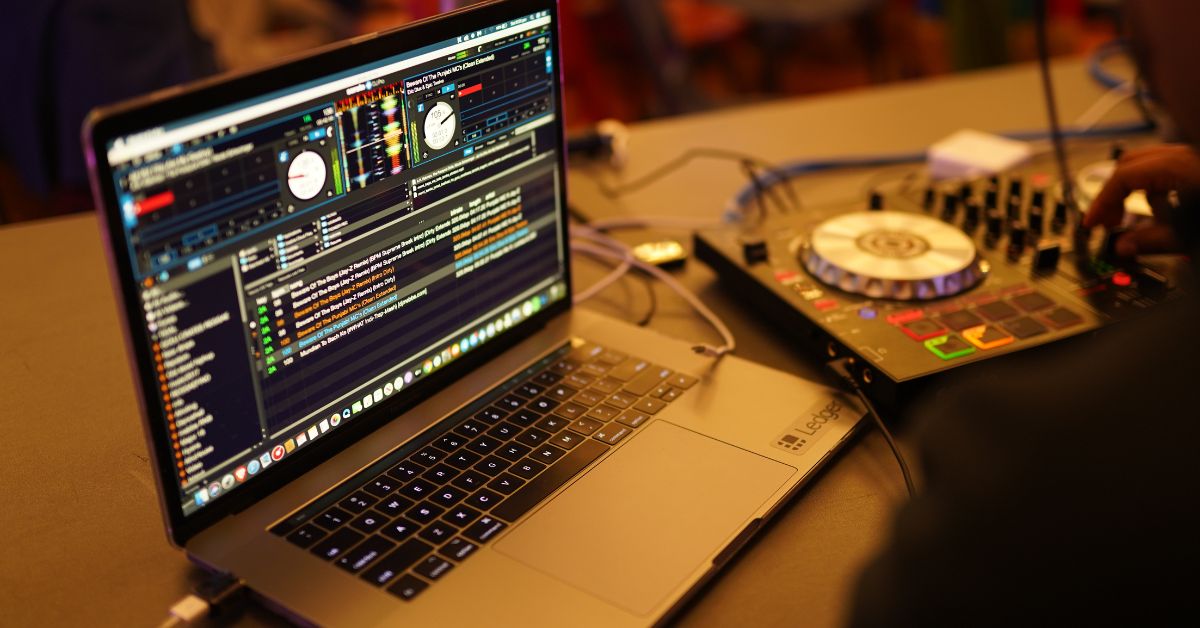Volume mixer is one of the best pieces of software to have control over your audio streams. Those that have used Windows before instantly recognize the little row of icons and volume controls, but where is it on Mac computers and how do you use it?
Volume mixer is a default program that comes on Windows computers and is not available on Mac. There is no equivalent either, you can only control volume at the master level on a Mac.
Let’s look at what you can do to get a volume mixer onto a Mac by looking at some alternatives via software downloads as well as settings configurations that can help you achieve the same thing. We’ll also go through some highly recommended volume mixers.
Where to Find Volume Mixer on a Mac?
The amazing Windows volume mixer that comes free as default with an install of Windows does not have an equivalent on Mac computers.
Upping or downing the volume using the volume keys will just result in the master sound going up and down.
This is fine if you’re just wanting to quickly mute or lower the sound, but it is inconvenient if you have one app that is very loud and doesn’t have individual volume control.
I don’t generally like to wade into the whole Windows vs Mac debate, but this is a pretty bad design decision, and surprising given that Apple tries to cultivate the idea that Macs are meant for creative work such as audio mixing and video editing and do it so much better.
The counter often is that if you’ve got enough money to buy a Mac, you can shell out an extra $10, $20 or $40 to get the benefits of a good software mixer but certainly many users of Windows or Linux may wonder why Apple hasn’t gotten around to making this free.
How Do You Control the Volume Mixer on a Mac?
If you want more control over individual volume adjustments on a Mac just like the volume mixer on Windows, you’re going to have to get some third-party apps.
These work pretty well with most versions of iOS, although many options have been discontinued due to the difficulties of re-coding or reformulating the program to work with some of the recent security updates to iOS.
There are some free and paid options but the paid options are going to be much better in almost all situations, as controlling sound is not the easiest task at a software level and if you want it done properly, it is going to require a slight investment.
So apart from using the volume controls on the keyboard to put the volume up and down, for more control over individual volume you’ll need to look at getting some software. Never fear, because I’ll show some great alternatives down below.
Can You Mute Sound From One Application on macOS?
MacOS does not allow a single application to be muted while leaving the others playing straight out of the box.
You’ll need to get a third-party application to control individual applications’ sound without muting master sound.
There are some similar features available without needing third-party apps, such as your browser having the ability to mute individual tabs by clicking on the speaker icon on the tab that is playing the audio.
Of course, most apps that are playing sound will have an individual volume control in them, such as the speaker icon for Spotify or similar, so you can individually drop that down to zero or mute which will still mean other audio streams like Safari are still playing at full volume.
However, not all apps offer this feature despite playing sound, so it’s important to consider getting some kind of volume mixer alternative.
What Are Some Volume Mixer Alternatives?
Fortunately, there are some great options out there for getting a similar feature to the Windows volume mixer.
Background Music allows you to automatically pause your music, set individual app’s audio volume and many other audio-related features. This is a free app and gets good reviews.
This app allows you to boost the volume of quiet apps, you can also record system audio and it doesn’t require a restart or complicated user permissions issues as it runs entirely in userspace.
This app doesn’t seem to work well with some applications, notably Microsoft Teams, and it also doesn’t perform well on newer versions of iOS such as Big Sur and Catalina.
Sound Control is an app that will give you mute access and individual volume bars for each app as well as a master volume, as well as being able to choose between output devices. They have a paid version for $25 and also offer a 14-day trial.
Audio Hijack is a virtual mixer that gives a visual interface to sound control. It offers audio capture, audio rerouting and general muting and individual audio stream control. It comes with a free version with limited features, and a paid version.
SoundSource is another great app that gives you control over your general inputs and outputs as well as easily discernible individual audio streams for specific adjustments. A license costs $43 but they also offer a free trial.
JackOSX seems to be discontinued, but some users have reported success with using it with older versions of Mac. One of the last updates they posted was on 23 May 2014.


